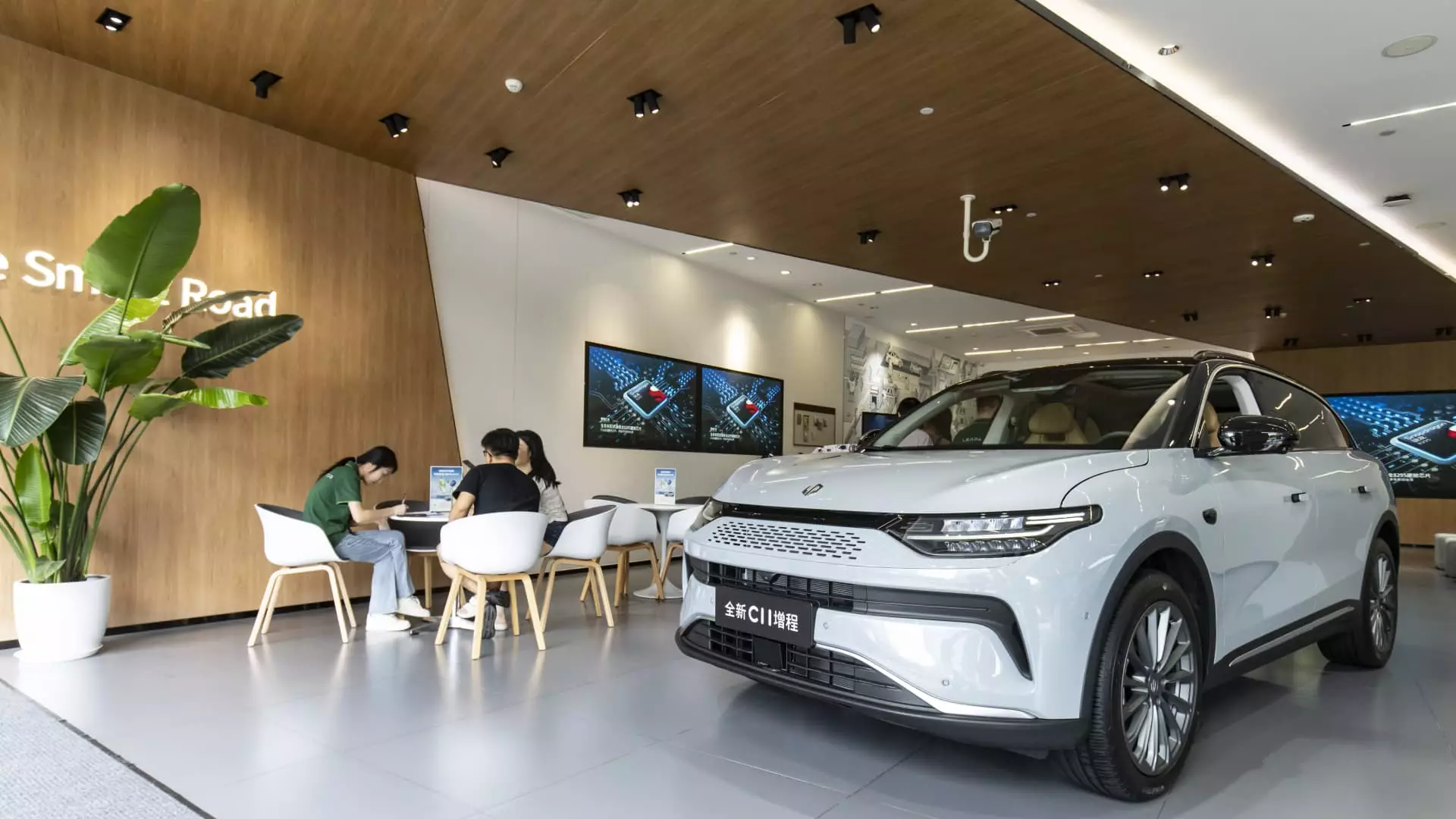China’s automotive landscape is undergoing a remarkable evolution that reflects both consumer preferences and strategic market developments. As observed in 2024, hybrid-powered vehicles have emerged as a favored alternative to both traditional gasoline cars and, to a lesser extent, fully electric vehicles (EVs). Notably, BYD—the frontrunner in the market—reported sales of approximately 4.3 million passenger cars. A striking 2.5 million of these were hybrids, showcasing a significant shift from the previous year when battery-only cars slightly eclipsed hybrid models. This trend underscores a growing consumer appetite for vehicles that offer enhanced flexibility and longer range without sacrificing environmental considerations.
In this dynamic market, BYD’s dominance is worth noting. Competitors such as Tesla are also active participants. The American firm is projected to maintain high sales in China, anticipating over 600,000 battery-only vehicle sales for the second consecutive year. This figure highlights not only the resilient demand for fully electric vehicles but also raises questions about the sustainability of such growth amid rising competition.
Li Auto is another significant player, achieving a record of over 500,000 vehicle deliveries which primarily feature hybrid technology. This trend among established automakers and startups alike illustrates a broader industry realization: that hybrids may represent a transitional solution towards complete electrification. Brands like Stellantis’ partner Leapmotor are also capitalizing on this trend by offering both battery and hybrid vehicles, with the aim to reach near half a million deliveries in the upcoming year.
Chinese electric vehicle startups, although experiencing lower revenues compared to established players, are not remaining idle. Zeekr and Nio reported modest sales figures, indicative of the growing competition yet substantial room for growth and development. Notably, Xpeng, which recently introduced its own hybrid system, showcases the industry’s pivot towards hybrid technologies.
The introduction of new players like smartphone giant Xiaomi into the EV market further signifies an expansion and diversification of the automotive landscape. With its SU7 electric sedan and an ambitious target of 300,000 cars by 2025, Xiaomi’s entry represents substantial new competition for traditional car manufacturers. This competitive climate fosters innovation, pushes for higher standards, and ultimately benefits the consumer by providing more choices.
China’s government has played a pivotal role in encouraging the shift towards new energy vehicles (NEVs), including hybrids. The national initiative of phasing out combustion-engine vehicles in favor of electric options has propelled sales dramatically. Indeed, data from the China Passenger Car Association indicates that in July 2023, NEVs accounted for over half of the vehicles sold. This marked a significant increase from 36% only months earlier, illustrating a burgeoning acceptance and adoption among consumers.
In cities like Beijing, policies favoring NEVs—such as simplified processes for obtaining license plates—further incentivize consumers to transition away from fossil fuel-powered cars. Meanwhile, financial incentives continue to bolster sales, showcasing the government’s commitment to building domestic automotive capabilities and reducing dependence on international brands.
Looking towards the future, projections suggest that hybrid vehicles may continue to occupy a significant market share even as fully electric vehicles gain traction. Joe McCabe, president and CEO of AutoForecast Solutions, forecasts a sustained demand for internal combustion engines alongside hybrid models in the years to come. This is a pivotal insight that reflects the hybrid’s integral role as a bridge in the transition to fully electric mobility.
As the automotive industry adapts to these changing dynamics, it becomes critical for manufacturers to innovate continually. Drawing on hybrid technologies can be seen as a response to consumer preferences for versatility and practicality while maintaining a commitment to lower emissions. The rise of hybrid-powered vehicles in China signifies a fundamental transformation in the automotive market—a shift toward more sustainable mobility that resonates well with the climate-conscious mindset of today’s consumers.


Leave a Reply